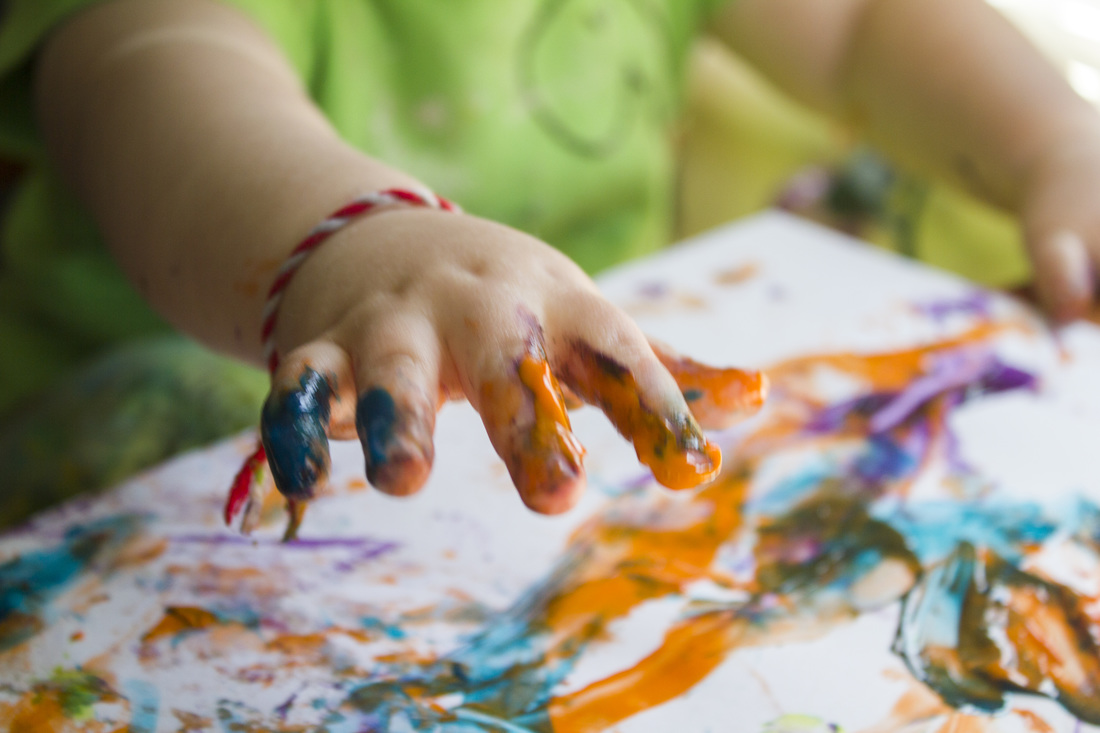In my experience, crafting with young children really isn’t about creating something in particular. My daughters loved doing stuff, pretty much anything that fell in the general craft category, especially when they were preschoolers. The fact is that most young children don’t have the foresight to see what a project is going to be.
For young kids, it’s more important that they have the opportunity to play and experiment with art. The ideas is that children need to use as many of their senses as possible to get the most out of crafting. This not only gives then the opportunity to try new sensory experiences, but also learn causal relationships. If you color that, and glue it here, and fold it this way, you get … this fun such and such.
For young kids, it’s more important that they have the opportunity to play and experiment with art. The ideas is that children need to use as many of their senses as possible to get the most out of crafting. This not only gives then the opportunity to try new sensory experiences, but also learn causal relationships. If you color that, and glue it here, and fold it this way, you get … this fun such and such.
Given that, these are my 10 favorite crafts for little kids based on all that and the all-important fun factor (cuz if it’s not fun, what’s the point).
- Finger painting: Finger painting is a wonderful activity for kids. It lets them ‘feel’ the craft as well as allowing them to create and imagine. I’m big on imagination because, as Einstein said, imagination is more important than knowledge. One thing we’ve lost in kindergarten and elsewhere (I used to teach kindergarten and run a playgroup) is play, especially of the unstructured variety. (I’ll be weighing in on that in future posts.) You actually don’t have to have finger paints to do this activity. You can finger paint with homemade paint, watercolors, or even mud. (Or pudding, as I posted about earlier.) You can also experiment with adding other things to the paint such as sand or glitter.
- Yarn Painting: Dip pieces of string or yarn into paint and then drag it across the paper to paint with it. It’s a good experience to paint with something other than a brush and you can just throw the yarn away when finished. Another way to do this is with marbles. I’ll have a video on how to do this soon.
- Q-Tip Painting: Use Q-tips to create a painting. There are lots of ways to use a Q-tip: scrub, dot, or use it like a brush. It’s a good coordination exercise because Q-tips are small and easy for children to hold, but also provide a lot of interest for a child. I’m planning some Q-tip video as they’re a great craft. Stay tuned.
- Glue Art: Draw squiggle lines on a piece of paper or let the child use her finger to make random glue spots or patterns on a piece of paper. Experiment with adding different objects to the glue. Sand, glitter, cotton, yarn, feathers, and tissue paper all work well.
- Salt Dough Sculpture: Make a batch of salt dough and turn the kids loose with it. You don’t have to worry about them eating it (it’s safe and tastes terrible) and clean up is easier than play dough. If you want to keep their creations, let them dry overnight and then paint them the next day.
- Toe Painting: If it’s a warm summer day, put on the swimsuits, put some finger paint into pie tins, lay out large sheets of poster paper, and let them ‘paint’ all afternoon. They will have a ball and all you have to do is hose them off when they are done. Messy? Yes. Fun. Duh.
- Found Object Art: This project is always a sure thing because kids love to discover things. Let your child gather up leaves, sticks, flowers, and so on and then glue them onto a piece of paper. When they’re done, let them tell you about their collection.
- Peanut Pictures: Every kid loves to play with packing peanuts — but it makes such a mess. Let them create pictures with them instead. Kids can draw on them, glue them to a sheet of paper, or glue the peanuts to each other to make a sculpture. The kids will love it.
- Sticker Play: Turn your child loose with a bunch of stickers, markers, and a sheet of paper and let them create. It’s good for little ones to work on their coordination, and it’s fun. Stickers, by the way, are huge in kindergarten. I used them all the time with kids and my kids would loooove getting those stickers.
- Stamping: Kids love to use any kind of stamps. My favorites are the self-inking stamps or the double-sided markers with the stamps on one end. This may sound like pure play, but is also teaches young children cause and effect.

